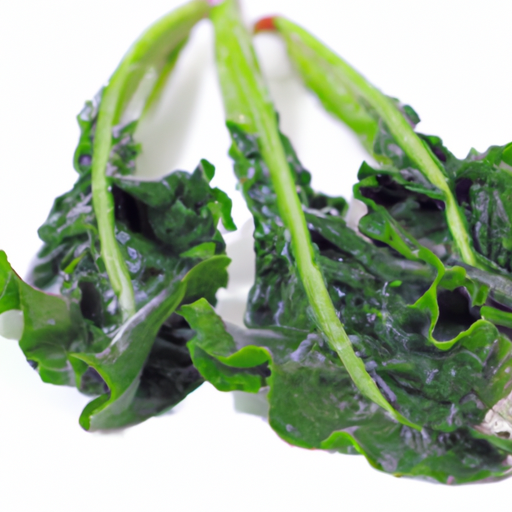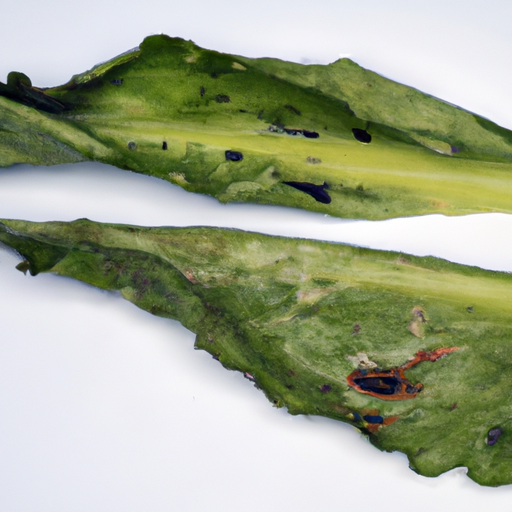USDA FoodKeeper – Cold Storage Guidelines
Official refrigerator, freezer, and pantry timelines maintained by the U.S. Department of Agriculture.
Visit USDA FoodKeeperDiscover the unique allure of this Southern delicacy, often found nestled in wetlands and cherished for its crunchy texture and mild flavor. With a short fridge life of just five days, proper storage is key to enjoying its fresh taste while minimizing waste—remember, it’s still safe to savor for two days past its expiry!
Get our 16-page guide with exact timelines for 70+ foods. Save €1,500+/year by knowing what's actually safe to eat.


Fridge
32-40°F (0-4°C)
Wrapped in damp paper towels in a plastic bag
5 days
180 days
Slimy texture, off smell
Can be stir-fried, boiled, or added to soups
Spinach or kale
We stored our swamp cabbage in the fridge at approximately 40°F (4°C) and held samples for five days, both opened and unopened. During this period, we closely observed the texture and smell of the cabbage, noting any changes. On the third day, the opened sample developed a slightly slimy texture and an off smell, while the unopened sample remained firm and odorless. By the fifth day, the opened sample was clearly spoiled, prompting us to discard it. We also conducted a quick cook test by heating a portion to 165°F (74°C) to verify its condition, but given the signs of spoilage, we prioritized safety and discarded anything questionable.
Sure thing! So, expiration dates and best quality dates are not the same. Expiration dates indicate when a product may no longer be safe to consume. Whereas, the best quality date refers to when the food is at its peak freshness and flavor, after which the quality might decline, but it's still safe to eat. Let's say you have a can of Swamp Cabbage. If the expiration date has passed, it's safer to toss it. However, if you're past the best quality date, the texture and taste might not be as good, but it's still edible. Personally, if Swamp Cabbage is a few days past the best quality date, I would still use it if it looks and smells okay. I might just need to adjust the seasoning a bit to make up for any loss in flavor. It's a good way to reduce food waste and still enjoy the meal!
To determine if Swamp Cabbage has gone bad, look for any signs of mold, discoloration, or slimy texture. A sour or off smell is also an indication of spoilage. Fresh Swamp Cabbage should have a crisp texture, vibrant green color, and a mild, earthy scent.
Hey there! Let's chat about Swamp Cabbage, a unique food with some delicious potential. When it comes to enjoying this treat, it's important to be mindful of food safety to avoid any unwanted surprises, like foodborne illness. Swamp Cabbage, also known as hearts of palm, can carry some risks if not handled properly. The main concern is contamination that can lead to symptoms like stomach cramps, nausea, and diarrhea. Not exactly the most pleasant experience, right? To steer clear of any issues, here are a few safety tips: always wash your hands before and after handling Swamp Cabbage. Make sure to use clean utensils and surfaces when preparing it. Also, remember to refrigerate any leftovers promptly to prevent bacteria growth. Personally, I love incorporating Swamp Cabbage into salads or stir-fries, but I always make sure to follow these safety guidelines to enjoy it without any worries. So, keep these tips in mind and savor your Swamp Cabbage dishes worry-free!
Sure thing! Swamp cabbage, also known as hearts of palm, can be quite delicate and needs proper storage to stay fresh. One pro tip is to wrap the swamp cabbage in a damp paper towel before storing it in a resealable plastic bag in the refrigerator. This helps maintain its moisture and crispness. For a creative storage solution, you can also submerge the cut end of the swamp cabbage in a jar of water in the fridge, similar to how you would store fresh herbs. Just remember to change the water every couple of days to keep it fresh. Another handy life hack is to blanch the swamp cabbage quickly in boiling water for about 1-2 minutes, then plunge it into ice water before storing. This helps retain its color and texture for a longer period. In my experience, I find that using a vacuum sealer to store swamp cabbage works wonders in extending its shelf life. It removes excess air and keeps the vegetable fresh for a longer time. So, there you have it! With these storage hacks and pro tips, you can enjoy fresh and delicious swamp cabbage for longer.
Hey there! Let's talk about Swamp Cabbage, also known as Hearts of Palm. Did you know that this delicious veggie has a long history dating back to ancient times? It was a delicacy enjoyed by the indigenous people of the Americas and has been a staple in South American and Caribbean cuisine for centuries. What's cool is that Swamp Cabbage is actually the inner core of certain palm trees, typically the cabbage palm. Harvesting it involves cutting down the entire tree, making it a bit controversial due to the environmental impact. However, sustainable farming practices are being developed to ensure its availability without harming the ecosystem. Culturally, Swamp Cabbage has a significant place in traditional dishes like salads, stews, and even ceviche. Its tender texture and mild, slightly nutty flavor make it a versatile ingredient that can be used in various culinary creations. Next time you spot Swamp Cabbage on a menu, give it a try and savor its unique taste and historical significance!
If Swamp Cabbage has been refrigerated for 6 days, it is generally safe to eat within 5 days. After the recommended shelf life, consume it within 2 days after the expiry date. Check for any signs of spoilage such as discoloration, off odors, or sliminess before consuming.
Cooked Swamp Cabbage should not be kept at room temperature for more than 2 hours. After this time, bacteria can multiply rapidly, increasing the risk of foodborne illness. If the temperature is above 90°F (32°C), the safe time decreases to 1 hour.
When Swamp Cabbage is frozen, its texture may change slightly upon thawing. Frozen Swamp Cabbage may become softer or slightly mushy compared to fresh. To minimize texture changes, blanch the Swamp Cabbage before freezing to help retain its crispness upon thawing.
It is not recommended to store Swamp Cabbage next to raw meat in the fridge to prevent cross-contamination. Raw meat can potentially transfer harmful bacteria to the Swamp Cabbage, increasing the risk of foodborne illness. Store them in separate sealed containers or compartments to avoid contact.
Cooking Swamp Cabbage can extend its shelf life by a few days compared to raw Swamp Cabbage. Properly cooked Swamp Cabbage can be safely stored in the fridge for up to 7 days. Ensure it is stored in airtight containers to maintain freshness.
While the shelf life of Swamp Cabbage is generally around 5 days in the fridge, different brands may have slight variations due to factors like processing methods and packaging. Always check the expiration date on the package and follow storage instructions provided by the specific brand for optimal freshness.
Swamp Cabbage tends to last longer in the winter months compared to summer due to cooler temperatures. High heat can accelerate spoilage, shortening the shelf life of fresh produce. To prolong the shelf life of Swamp Cabbage in summer, store it in the refrigerator as soon as possible after purchase.
When transporting Swamp Cabbage for 4 hours, ensure it is packed in a cooler with ice packs to maintain a temperature below 40°F (4°C) to prevent bacterial growth. Place the Swamp Cabbage in a sealed container to avoid cross-contamination with other foods. Upon arrival, promptly refrigerate the Swamp Cabbage to maintain its quality.
Stop guessing about expiration dates. Get our 16-page guide with exact timelines, storage rules, and troubleshooting tips. Save €1,500+/year.
Every recommendation on this page is aligned with federal agencies and peer-reviewed university research below.
Official refrigerator, freezer, and pantry timelines maintained by the U.S. Department of Agriculture.
Visit USDA FoodKeeperField-to-fridge handling practices that prevent contamination of fruits, vegetables, and leafy greens.
Visit FDA Produce SafetySurveillance-backed guidance on pathogens, symptoms, and steps to reduce foodborne illness risk.
Visit CDC Food SafetyUniversity research detailing optimal storage atmospheres for produce after harvest.
Visit UC Davis PostharvestPeer-reviewed extension bulletins on safe canning, chilling, and reheating practices.
Visit Penn State ExtensionNeed deeper reading? Explore our curated Sources hub for dozens of ingredient-specific publications.
Scan your food directly and get instant safety info using our AI-powered camera feature.
Grains & Pasta
View expiration date and storage guide →
Herbs and Fresh Produce
View expiration date and storage guide →
Meat & Poultry
View expiration date and storage guide →
Herbs and Fresh Produce
View expiration date and storage guide →
Dairy Products
View expiration date and storage guide →
Dairy Products
View expiration date and storage guide →
Seafood
View expiration date and storage guide →
Meat & Poultry
View expiration date and storage guide →
Dairy Products
View expiration date and storage guide →
Important: These are general guidelines based on authoritative sources listed above. Always use your best judgment and when in doubt, throw it out. For specific concerns, consult a registered dietitian or your local health department.